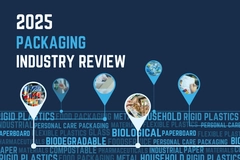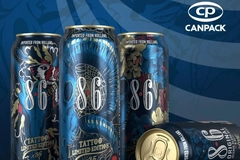UK scientists develop “self-healing” plastic for durability and shelf life expansion

Adding nanosheets of the compound MXene to plastic can act as a healing agent with glue-like properties, according to new UK research. This specially developed compound can make plastic more durable and “fix itself” when damaged.
The research team behind the breakthrough, based at the UK’s Bournemouth University, aims to open the door to the development of plastic materials and packaging that are more durable than traditional materials, expanding shelf life and decreasing waste.
“We are following the same process as Mother Nature — when you cut your finger, the blood will initially solidify to cover the crack until the skin tissue seals it, and that is what we are doing with our plastics,” says study lead Dr. Amor Abdelkader, associate professor in Advanced Materials at BU.
“Most of the things in our everyday lives have plastic in them and this has the potential to extend the life of a whole range of products and reduce waste, from reusable drink bottles to mobile phones to plastic pipes and so much more.”
The study, published in the journal Applied Nano Materials, reveals that adding MXene to plastic improved its tensile strength (the maximum strain a material can withstand), reaching 0.93 MPa and a high healing efficiency of 88.3%.
 The researchers added a healing agent to the MXene, which remains inactive until the plastic material is somehow harmed (Image credit: Bournemouth University).MXene’s self-healing properties
The researchers added a healing agent to the MXene, which remains inactive until the plastic material is somehow harmed (Image credit: Bournemouth University).MXene’s self-healing properties
The study focuses on MXene nanosheets, the transformation of F-rich MXene to O-rich MXene and their impacts on the mechanical and healing properties of partially crystallized polymeric hydrogels.
MXene looks like powder to the naked eye and it has already been used industrially to strengthen plastics. The scientists added a healing agent to the MXene, which remains inactive until the plastic material is somehow harmed. The damage activates the healing agent, which bonds the broken sections together with its glue-like properties.
Dr. Chirag Ratwani, the project chief scientist and a PhD student at BU, says: “Using MXene with our healing agent means that we get the benefits of stronger plastic, which is harder to break, but if it does break, it will fix itself. The process takes just a few minutes, and we managed to restore the plastic to 96% of its original strength.”
Ongoing research
The team is now further researching the material’s healing function to design new devices that could last longer by repairing themselves.
 Adding MXene to plastic increases the maximum strain it can withstand, finds latest research (Image credit: Bournemouth University).Abdelkader explains: “We have tested that and designed new sensors for detecting human motion that self-repair after being subjected to damage. Such a concept paves the way for new-generation electronics that require no or minimal maintenance and therefore last longer.”
Adding MXene to plastic increases the maximum strain it can withstand, finds latest research (Image credit: Bournemouth University).Abdelkader explains: “We have tested that and designed new sensors for detecting human motion that self-repair after being subjected to damage. Such a concept paves the way for new-generation electronics that require no or minimal maintenance and therefore last longer.”
Last year, scientists at the University of Konstanz, Germany, created a mineral plastic that can regenerate after damage using natural biopolymer polyglutamic acid. The material was also found to completely degrade in 32 days.
The concept of self-healing packaging is not limited to plastic. In an interview with Packaging Insights, Russell Turner, product development director at DS Smith, revealed that the company is working to develop cardboard that can repair on its own.
Self-Healing Plastic, MXene, MXene Nanosheets, Durable Plastic, Reusables, Shelf Life, Healing Agent
Adding MXene to plastic increases the maximum strain it can withstand, finds latest research.











